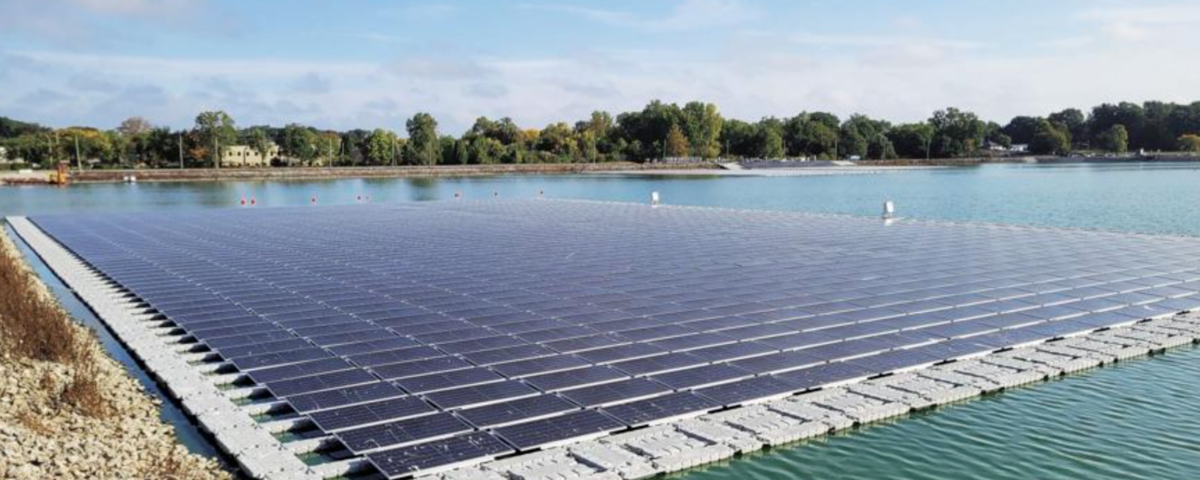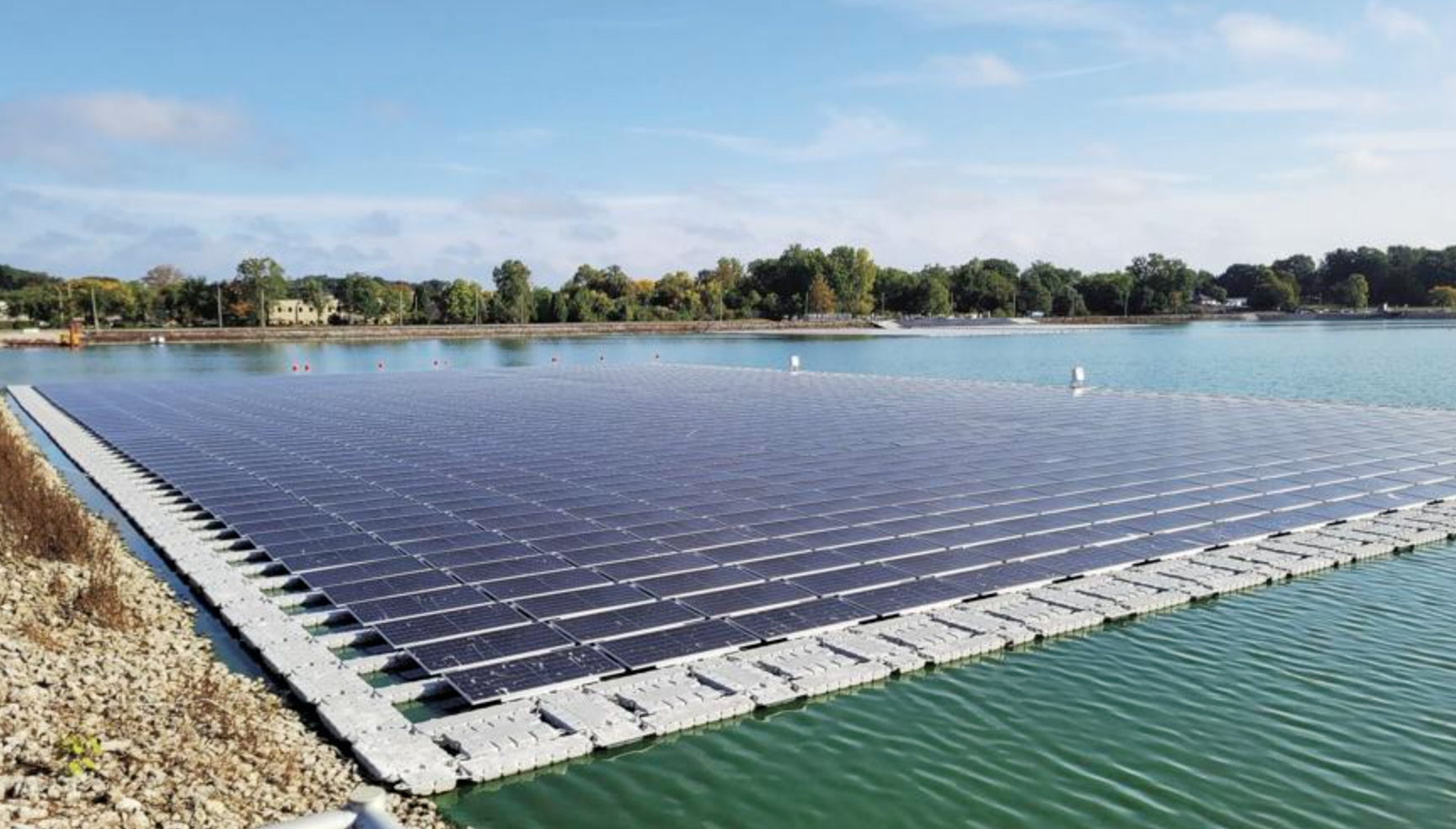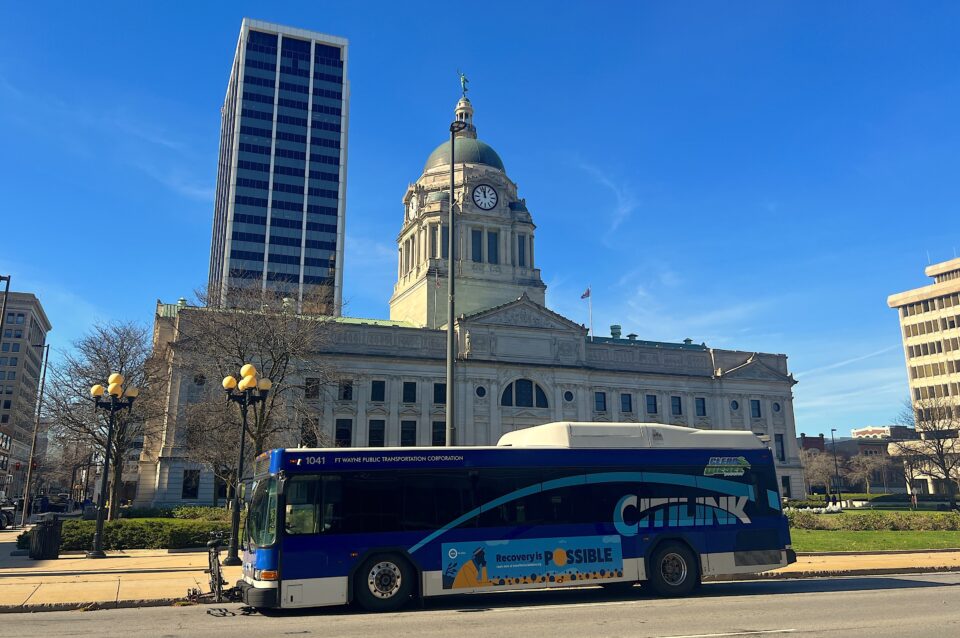Fort Wayne Completes Innovative Microgrid to Power Water Systems

A new energy grid powering Fort Wayne’s water utilities highlights complex new technology that puts the city on the cutting edge of energy usage.
Earlier this month, Fort Wayne officials flipped the switch on what it calls its new “microgrid” system. The system draws on a newly-completed floating solar panel array, biogas and traditional natural gas to power the Three Rivers Filtration Plant, the Water Pollution Control Plant and the Wet-Weather Pump Station.
The array sits on a lagoon near the water filtration plant, and it’s innovative in and of itself as the second largest floating solar array in the U.S. But solar energy is one of the three energy sources the utility company can use as part of the new microgrid, which connects the facilities electrically and distributes power efficiently as the facilities’ usage peaks at different times.
Microgrids have one or more local power sources and are often connected to a national grid, but can operate independently. In essence, the new microgrid allows Fort Wayne utility plant operators to switch between different energy sources depending on which is most cost-effective in real time.
The end result, according to City Utilities Deputy Director Matthew Wirtz, is that the plants have a reliable supply of power in case of an emergency, will save tens of millions of dollars in energy costs and are more environmentally sustainable.





